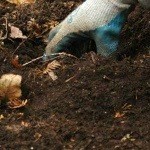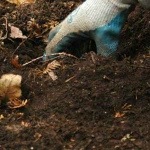Is Your Soil Ready?
Learning the soil’s temperature and moisture content is the key to knowing when to sow and grow. Article via organic gardening.com.
Too Cold or Too Wet?
 If you’ve read a spinach-seed packet, then you’ve probably seen the advice “sow as soon as the soil can be worked in spring.” But what exactly does this mean? We called on a team of horticulturists and soil scientists to help us identify clues that indicate soil is ready for seeds and transplants. After a little digging, our experts revealed that learning your soil’s temperature and moisture content is the key to knowing when to sow and grow.
If you’ve read a spinach-seed packet, then you’ve probably seen the advice “sow as soon as the soil can be worked in spring.” But what exactly does this mean? We called on a team of horticulturists and soil scientists to help us identify clues that indicate soil is ready for seeds and transplants. After a little digging, our experts revealed that learning your soil’s temperature and moisture content is the key to knowing when to sow and grow.
Each vegetable crop has an ideal temperature range that promotes optimal growth. Cool-season crops, such as kale and peas, grow faster and resist disease better at lower soil and air temperatures than warm-season crops, such as tomatoes and eggplants. If the soil is too cold at planting time, “germination and early growth is slowed, which leaves the new seedling exposed and vulnerable to soil microbial and fungal attacks,” explains Tony Bratsch, an extension vegetable specialist with the Virginia Cooperative Extension Service in Blacksburg, Virginia.
Getting your soil’s moisture content right is a bit of a balancing act: If there’s too much moisture, your seeds will rot; too little, and they won’t germinate. Wet soils can contribute to disease problems, “and even ‘drown’ the seed by limiting oxygen uptake critical for early seedling growth,” adds Bratsch. Working in wet soil can also damage its structure, resulting in hard clods that take years to break back down.



Comments are closed.